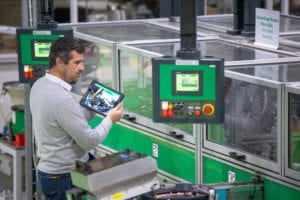Over the last 10 years, on average about 260 natural disaster events occurred each year, costing an estimated $132 billion (U.S.) annually. What’s more, on average 29 individual disasters occur each year that cost $1 billion or more.
These figures from the Aon Benfield 2014 Annual Global Climate and Catastrophe Report (the latest available) clearly demonstrate that costly disasters are, unfortunately, not at all rare. In fact, a study by the research firm Forrester showed more than one in four companies declared at least one disaster during the past 5 years.
It’s imperative, then, that businesses prepare for the worst so they can survive a disaster with limited lasting damage. As I wrote in an article for Business Insider, the key lies in taking some strategic precautionary steps and being prepared for recovery after the disaster is over.
In the piece I outlined seven ways to prepare for a disaster but for the purposes of this post I want to focus on just three of them.
1. Have dual utility sources
If at all possible, it’s always a good idea to secure power and water supplies two different utility sources in case one fails. IT managers should ensure their electricity comes from at least two different utility substations while facilities managers will want to make sure water comes from two different main lines. What’s more, both lines should ideally be underground and enter the building from different areas, in case the building suffers structural damage.
2. Protect the brains of your data center
Multiple management systems control the various generators, switchgear, uninterruptible power supply (UPS) systems, HVAC systems, fire alarms, security and other mechanical and electrical equipment. These systems must be designed to be fault-tolerant in order to survive a disaster and keep the data center up and running. One approach is a distributed control architecture, where a number of small controllers each handle individual processes, thus preventing a total shutdown from the loss of a single controller. Another approach is to build in fault-tolerance by using redundant control systems, power supplies and networks.
3. High-efficiency, high-power UPS
A UPS is critical to ensuring your data center and other critical building facilities can survive a disaster. For example, in the event of a power outage, UPSs keep critical IT systems running until backup generators come online, thus preventing system reboots which can result in lost data and excessive downtime. While many low-cost UPS systems are available, it’s best to invest in a high-efficiency model that’s less costly to operate over its lifetime. You also need to make sure the UPS has adequate power to support your critical loads in a time of need.
For more tips on how to ensure your data centers and other facilities can survive various sorts of disasters, check out my Business Insider article. Given the preponderance of disasters in APAC, it’s only a matter of time until your disaster plans will have to kick into action, so make sure they’re up to the task.


